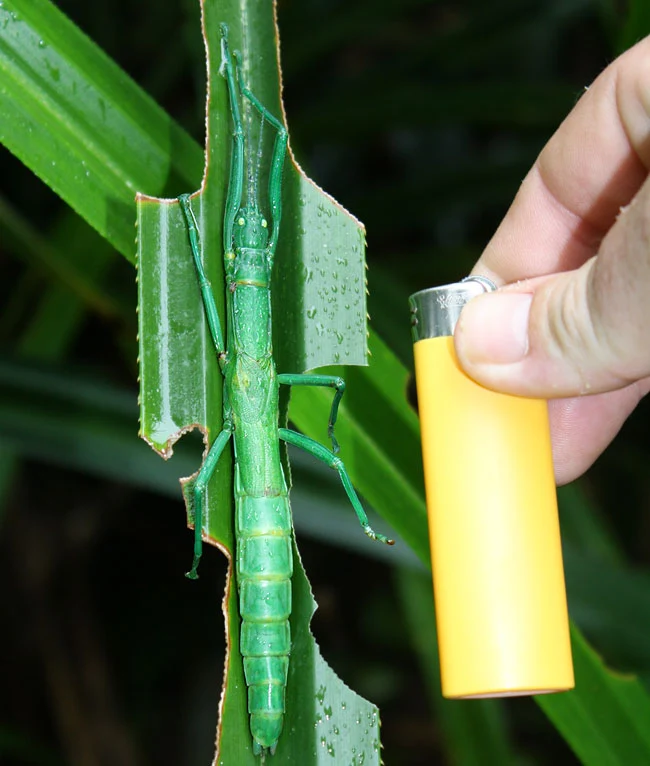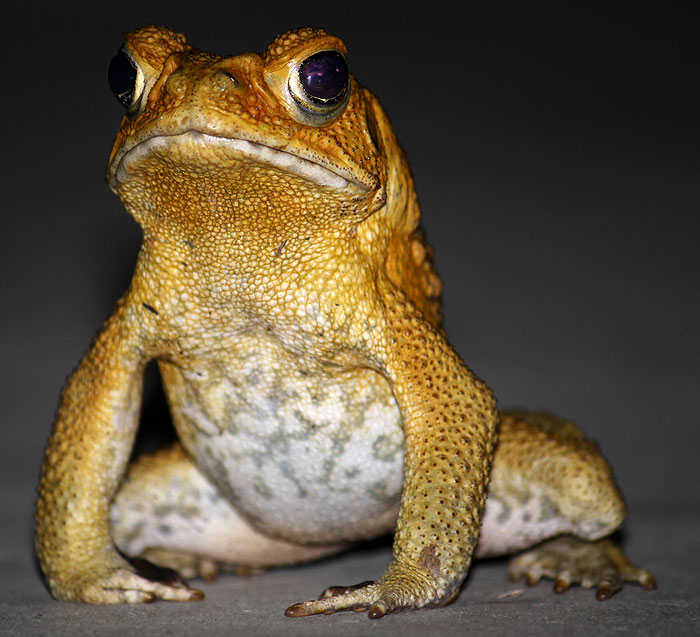Peppermint Stick Insects
Jo and I managed to slip away for a cheeky weekend in the Daintree - no phones, no emails no chores - bliss. And we were lucky enough to meet some really top rate people who deserve a mention.
On a whim we decided to stop at the Insect Museum where we met Suzanne who was gamely holding down the fort in less than ideal weather. Anyway, we got to talking and I noticed a pandanus plant in the garden outside and mentioned we were on the hunt for some peppermint stick insects (we had a fairly good idea what and where to look, but it's always good to talk with others in the know).
Suzanne was brilliant, helpful, friendly and a mine of information - the insect museum itself is one of those hidden gems that could be so easily missed (esp the way some of those lunatic 'tourists' drive through the Daintree!?), so if you get the chance check it out - at $10.00 a head you can't go wrong.
We left the museum and headed for our destination where we dumped our bags, applied some insect repellent (ironic huh?) and hit the walking tracks. Now, if you've ever gone out specifically looking for one creature or another - you'll know just how unusual it is for your search to be rewarded. Happily, on this occasion we were in luck. It wasn't long before Jo spotted one and with our eye in the rainforest seem to be teeming with peppermint stick insects!.
I couldn't believe just how beautiful these insects are. And the range of colours and hues was mind blowing - from pale green to turquoise with blue, yellow and pink highlights - punk rockers of the pandanus eh?
As I have never looked for these insects before, it was difficult for me to judge whether they are as common as they appeared to be or if we had just stumbled upon a boom time ...?
Peppermint Stick Insects are so named because of the milky discharge they spray (with some accuracy) from glands in their thorax that smells strongly of peppermint but it's extremely irritating to the eye (and I don't imagine it tastes quite like peppermint either) - if it does, let me know.
It seemed to me that the males (males have noticeably longer wings), were much more 'trigger happy' than the females - perhaps because conditions were perfect for breeding?. Bloody men eh?.
Much of the Daintree is a national park - please respect this and if you're intending to head there to check out the wildlife the only things you should take away from it are memories and photographs.
Notice that little bug in the pic above? - digging away at the join of the thorax. If you look at some of the other pics these insects seem to noticeably collect in this area and I'd be willing to bet there is some sort of relationship between that behaviour and the 'peppermint' secretions.
The little bugs are around 3mm total length and I have no idea what they are ... but there is something going on there eh? (and no. I don't want to 'google' it, I like to have my own unsubstantiated observations - even if they're wrong) ... course it could just be a sand-fly ... but still, what's it drinking?
Of course it wasn't all about peppermint stick insects, this beautiful bug below landed on my shirt while I was attempting to take his picture - obviously not camera shy eh?
Sometimes things just work out - but as always, this picture just does not do this insect, (which was around the size of the first joint of my thumb) enough justice - and I would've preferred a shot of it on the plant - but ya can't have everything eh?.
Unfortunately, we also came across a sounder of feral pigs - it's not often I wish I had a rifle on me these days. But that would be one occasion, as they are so destructive and have no place in a national park ... but then, of course, neither do firearms I suppose.
All in all, it was a fantastic day and we capped it off by heading to the pub ...
There's much more to post, but time is pressing so until next time - take care.
On a whim we decided to stop at the Insect Museum where we met Suzanne who was gamely holding down the fort in less than ideal weather. Anyway, we got to talking and I noticed a pandanus plant in the garden outside and mentioned we were on the hunt for some peppermint stick insects (we had a fairly good idea what and where to look, but it's always good to talk with others in the know).
Suzanne was brilliant, helpful, friendly and a mine of information - the insect museum itself is one of those hidden gems that could be so easily missed (esp the way some of those lunatic 'tourists' drive through the Daintree!?), so if you get the chance check it out - at $10.00 a head you can't go wrong.
We left the museum and headed for our destination where we dumped our bags, applied some insect repellent (ironic huh?) and hit the walking tracks. Now, if you've ever gone out specifically looking for one creature or another - you'll know just how unusual it is for your search to be rewarded. Happily, on this occasion we were in luck. It wasn't long before Jo spotted one and with our eye in the rainforest seem to be teeming with peppermint stick insects!.
I couldn't believe just how beautiful these insects are. And the range of colours and hues was mind blowing - from pale green to turquoise with blue, yellow and pink highlights - punk rockers of the pandanus eh?
 |
| Megacrania batesi |
 |
| Pandanus (and yep, there are actually two PSI's on that plant) |
As I have never looked for these insects before, it was difficult for me to judge whether they are as common as they appeared to be or if we had just stumbled upon a boom time ...?
 |
| Juvenile |
Peppermint Stick Insects are so named because of the milky discharge they spray (with some accuracy) from glands in their thorax that smells strongly of peppermint but it's extremely irritating to the eye (and I don't imagine it tastes quite like peppermint either) - if it does, let me know.
 |
| Male |
It seemed to me that the males (males have noticeably longer wings), were much more 'trigger happy' than the females - perhaps because conditions were perfect for breeding?. Bloody men eh?.
 |
| Preparing to mate |
Much of the Daintree is a national park - please respect this and if you're intending to head there to check out the wildlife the only things you should take away from it are memories and photographs.
 |
| Female |
Notice that little bug in the pic above? - digging away at the join of the thorax. If you look at some of the other pics these insects seem to noticeably collect in this area and I'd be willing to bet there is some sort of relationship between that behaviour and the 'peppermint' secretions.
The little bugs are around 3mm total length and I have no idea what they are ... but there is something going on there eh? (and no. I don't want to 'google' it, I like to have my own unsubstantiated observations - even if they're wrong) ... course it could just be a sand-fly ... but still, what's it drinking?
Of course it wasn't all about peppermint stick insects, this beautiful bug below landed on my shirt while I was attempting to take his picture - obviously not camera shy eh?
 |
| hold it ... hold it .... |
Sometimes things just work out - but as always, this picture just does not do this insect, (which was around the size of the first joint of my thumb) enough justice - and I would've preferred a shot of it on the plant - but ya can't have everything eh?.
 |
| Ixora Shield Bug Catacanthus punctus |
Unfortunately, we also came across a sounder of feral pigs - it's not often I wish I had a rifle on me these days. But that would be one occasion, as they are so destructive and have no place in a national park ... but then, of course, neither do firearms I suppose.
All in all, it was a fantastic day and we capped it off by heading to the pub ...
There's much more to post, but time is pressing so until next time - take care.
Where to find peppermint stick insects?
Look on the Pandanus plant, checking for obvious signs of feedin. These nocturnal insecta like to wait out the day by laying in the grooves of the plants leaves. If disturbed they will slip backwards into the lowest stems. Take care in Pandanus as the leaves are spiny and sharp - but you'll figure that out pretty quickly I guess.
Look on the Pandanus plant, checking for obvious signs of feedin. These nocturnal insecta like to wait out the day by laying in the grooves of the plants leaves. If disturbed they will slip backwards into the lowest stems. Take care in Pandanus as the leaves are spiny and sharp - but you'll figure that out pretty quickly I guess.







Comments
Post a Comment